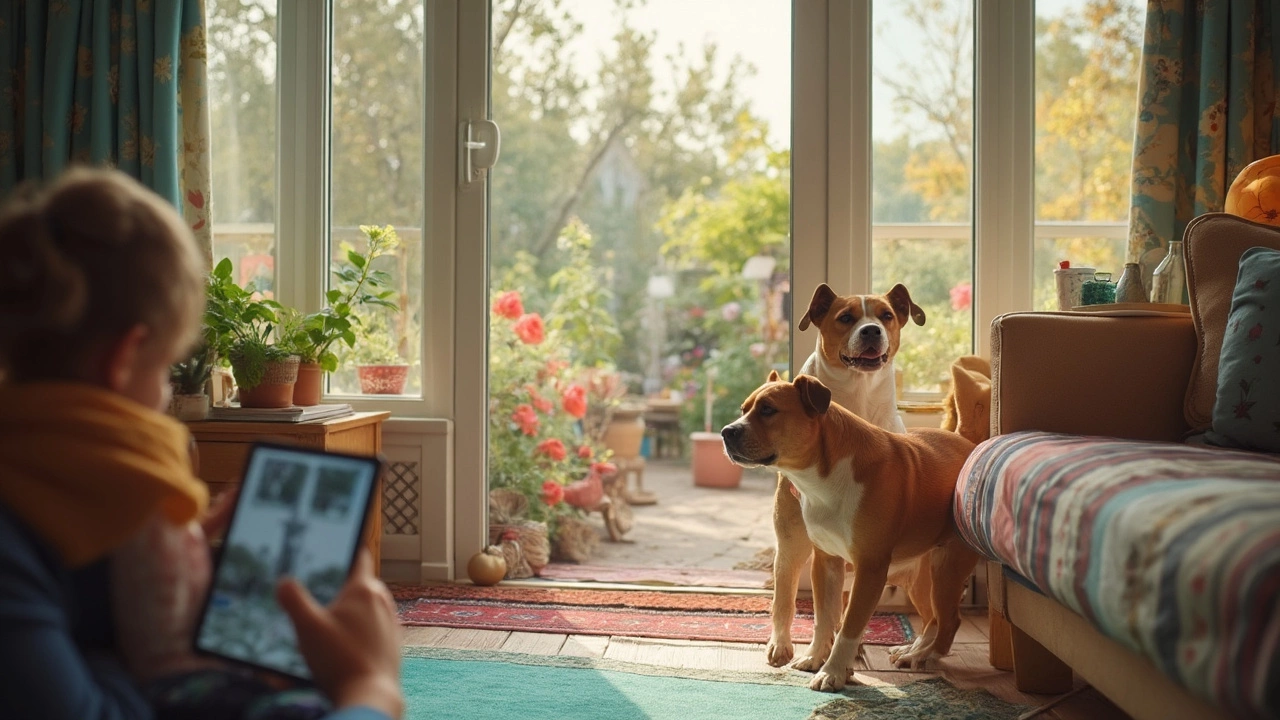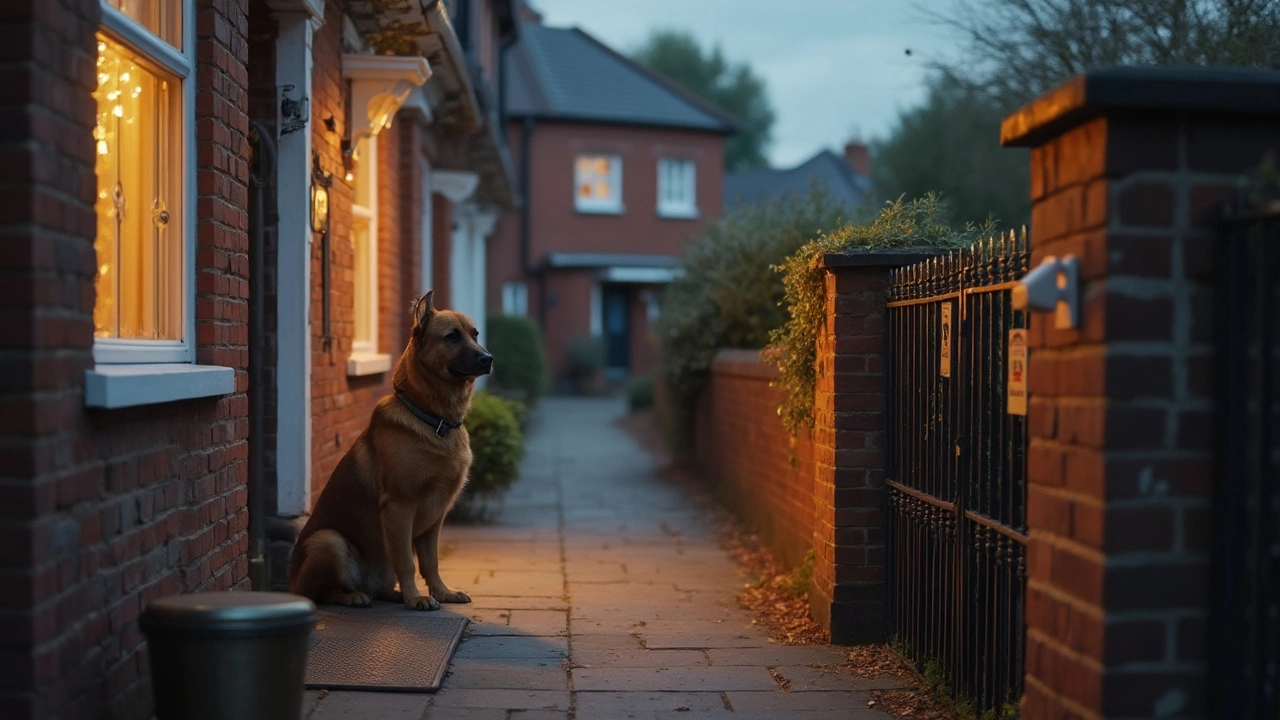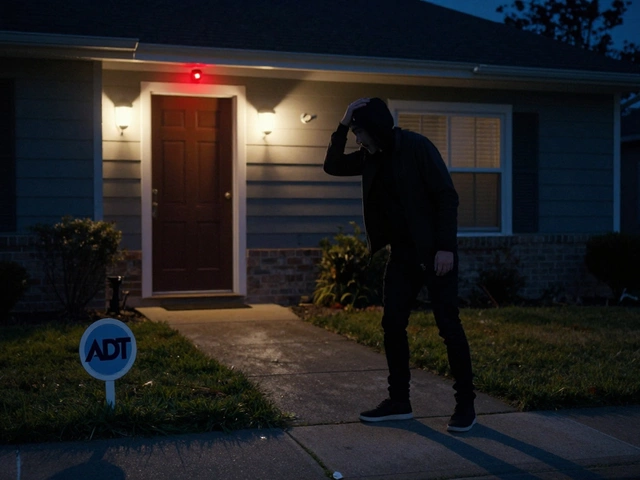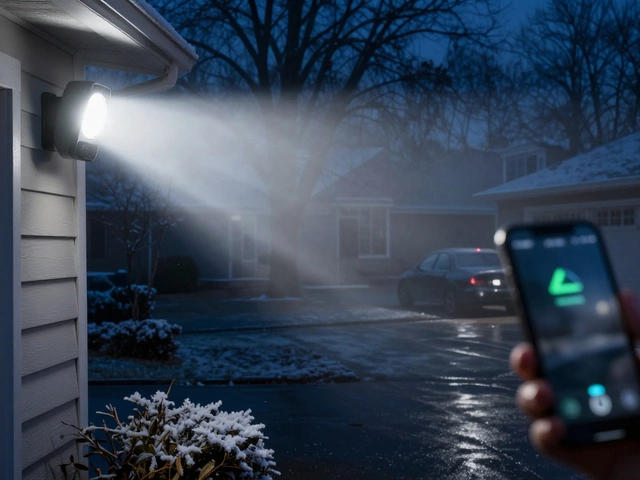If you’ve got a dog at home, chances are you’ve heard that it’s a built-in alarm system—a furry, tail-wagging security guard. But does that actually stack up in real life? Plenty of folks put their trust in their pets to keep bad guys away, but it’s not as simple as having just any dog snoring by the door.
Let’s get real: not every dog breed scares off intruders. Some are too busy snoozing when the mail arrives. But even a tiny yapper has its perks. A loud bark at the right time can make any would-be burglar panic. Studies by criminology groups show burglars hate unknown variables, and a barking dog is just that—chaos they don’t want to deal with.
On the flip side, relying on a sleepy pug for serious security might leave you open to a rude surprise. That’s one reason pet-friendly alarm systems are catching on. They pick up where your dog’s attention span drops off, letting you keep your home safe and your pet stress-free.
- What Makes Dogs a Real Security Asset?
- Does Size or Breed Matter for Deterring Burglars?
- How Criminals View Homes with Dogs
- Dogs and Alarms: The Winning Combo
What Makes Dogs a Real Security Asset?
Having a dog at home does more than just make family life lively. These pets naturally keep watch, and their sharp senses are tough to beat. With hearing up to four times better than ours, dogs usually spot people near your house way before you do. That kind of early warning system beats even some basic home tech.
But what really stands out is a dog’s instinct to bark at anything unusual. Most burglars aren’t looking to tussle with a protective animal. According to a 2023 survey of convicted burglars, over 60% said the presence of a dog—especially one that barked—made them skip that house entirely. That’s not just talk. The second loud bark kicks in, most unwanted guests head for easier targets.
Besides hearing and barking, many dogs have a nose for trouble—literally. They pick up strange scents within seconds and can react before you even notice someone’s on the property. That means, if something seems off, your pet probably knows it first.
If you’ve got a family, a dog does double-duty for family safety. Their presence alone can make people feel more secure, especially kids who are often nervous about break-ins. You’re not just getting cuddles; you’re getting extra eyes and ears on your place, even when you’re asleep.
- Dogs act as a living alarm with super-sensitive hearing.
- Barking at strangers is a major burglar deterrent.
- Their loyalty means they take home security seriously, even if they're not trained guard dogs.
| Home Feature | Deters Intruders? |
|---|---|
| Barking Dog | Very Effective |
| Noisy Alarm | Effective |
| No Dog/Alarm | Low Effectiveness |
So, if you want a natural layer of home security, a dog is a solid start. Just remember—they work best as part of your big-picture plan, not as the whole thing.
Does Size or Breed Matter for Deterring Burglars?
This is the question that gets people arguing: do you really need a huge guard dog for solid home security, or will any dog do the trick? Turns out, the answer isn’t so simple. Big breeds like German Shepherds, Rottweilers, and Dobermans have a reputation for scary barking and a strong protective vibe. They top the list when it comes to intimidating folks who might peek over your fence with bad intentions.
But here's the twist—size isn’t everything. Multiple surveys done by police departments and security experts found that burglars hate noise and unpredictability even more than they fear big teeth. A yappy little terrier might annoy your neighbors, but it also makes sneaking around your place a nightmare for a thief.
Check out this real-world data from a 2023 home security survey:
| Dog Type | Burglary Deterrence Rate (%) |
|---|---|
| Large breed, visible | 71 |
| Small breed, loud | 61 |
| No dog | 28 |
Notice how even small, loud dogs offer a decent boost to your family safety compared to homes without dogs. That bark—more than size—makes burglars think twice.
Of course, giant breeds still bring benefits. They tend to be more physically protective and their presence is enough to stop lots of break-ins before they even start. But if you’re not a fan of big slobbery friends, don’t stress. Plenty of small breeds are super alert and are wired to sound the alarm the second they hear suspicious sounds. Think Miniature Schnauzers or Chihuahuas—they have attitude and volume, even if they don’t have height.
- If you want both intimidation and noise, consider popular guard breeds like Belgian Malinois or Boxers.
- Live in an apartment? Smaller breeds like Dachshunds and Jack Russells can fit your lifestyle and still pack a security punch.
So, bottom line: for burglar deterrence, both size and breed matter, but a reliable bark and alertness can be just as valuable as brawn. Choose a dog that fits your family, not just your fantasy of home defense.

How Criminals View Homes with Dogs
To figure out if dogs really help with home security, it’s smart to look at things from a burglar’s perspective. Surveys with actual convicted burglars give some straight answers: most say they’d rather skip homes with dogs. Why? Unpredictability. An alarm system usually follows a script, but a barking dog doesn’t.
In a study done for the UNC Charlotte Department of Criminal Justice, nearly 50% of burglars said they’d avoid a house with a noisy dog. Sure, a tiny dog might not tackle an intruder, but its bark can still blow the cover. Most thieves just don’t want the headache or risk of making a quick job messier.
- If a dog seems large or aggressive, the chance of a break-in drops even more.
- Multiple dogs? That’s double trouble for a potential burglar.
- Younger, more alert dogs get noticed. Dogs that look old or super relaxed usually don’t scare anyone off.
Of course, not every thief is put off by dogs, especially if the animal looks friendly or is outside in a fenced yard. But a constantly barking pet near the front door or windows makes a lot of bad guys think twice.
| Security Feature | Would Avoid (%) |
|---|---|
| Barking Dog | 49 |
| Alarm System Notice | 60 |
| Visible Cameras | 41 |
So, having a dog visible can work as a pretty solid deterrent, especially when the animal is noisy, energetic, or looks protective. But the gold standard for family safety is a mix of both: a pet for chaos and a good alarm system for backup.
Dogs and Alarms: The Winning Combo
If you’re serious about home security, don’t pick between a dog and an alarm—use both and double your protection. A dog brings the noise, unpredictability, and street-level deterrence, while a modern pet-friendly alarm catches what your pup might miss. Think of it as teamwork: your dog sounds off at a weird noise, then the alarm system steps in if someone actually breaks in.
There’s smart tech now that works with pets, not against them. Traditional motion sensors can get tripped by a dog, but new systems let you set weight or height limits, so Fido doesn’t trigger a false alarm every time he goes for a midnight snack. In 2023, Consumer Reports ranked several pet-friendly alarms that filtered out pets up to 50 pounds—meaning your security system is focusing on real threats, not your dog’s antics.
Check out some of the best features available in current pet-friendly alarms:
- Motion sensors that ignore pets under a set weight
- Glass break sensors that only go off with a real smash
- Smartphone alerts that let you check in by camera before calling the cops
- Outdoor cameras with two-way audio to yell at trespassers—or just remind the dog it’s not dinnertime yet
If you look at numbers, houses with both a dog and a visible alarm sign are way less likely to get hit. According to a suburban police survey in 2024, 68% of burglars say they’d avoid homes with barking dogs and security tech before targeting another house. Here’s a quick breakdown from that survey:
| Home Feature | Percentage of Burglars Avoiding |
|---|---|
| Dog Only | 44% |
| Alarm Only | 51% |
| Dog + Alarm | 68% |
The takeaway? Relying on just one layer might leave you exposed. Instead, let your four-legged friend work alongside the latest gadgets, and you’ll keep intruders guessing—and outside—where they belong.






